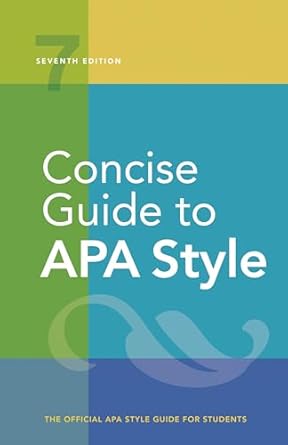[toc]
semicolon colon guide usage rules examples
Concise Guide to APA Style: 7th Edition (OFFICIAL)
Page 109 Review
Mastering Punctuation: A Deep Dive into Semicolons and Colons
Punctuation is the backbone of clear and effective writing.
Among the various punctuation marks, semicolons and colons often pose a challenge for writers.
This analysis explores the specific rules and applications of these marks, as outlined in a comprehensive guide.
The Versatile Semicolon
The semicolon is a powerful tool for connecting related ideas and structuring complex sentences.
According to the guide, “Use a semicolon in the following cases: to separate two independent clauses that are not joined by a conjunction.” This is illustrated by the example: “Students received course credit for participation; community members received $10.” Here, the semicolon elegantly links two distinct but related facts without the need for a coordinating conjunction like ‘and’ or ‘but’.
Furthermore, semicolons are crucial when linking independent clauses with conjunctive adverbs.
The guide states: “to separate two independent clauses joined by a conjunctive adverb such as “however, “therefore,” or “nevertheless.”” An example provided is: “The children studied the vocabulary words; however, they had difficulties with recall.” The semicolon, paired with the conjunctive adverb ‘however,’ creates a smooth transition and highlights the contrast between the two clauses.
Semicolons also play a vital role in clarifying lists, especially those containing internal commas.
The rule states: “to separate items in a list that already contain commas (see Section 4.11).” Consider this example: “The color groups were red, yellow, and blue; orange, green, and purple; or black, gray, and brown.” Without the semicolons, the list would become a confusing jumble of colors.
The semicolons provide clear boundaries between the groups, enhancing readability.
In academic writing, semicolons are indispensable for managing parenthetical citations and complex statistical data.
The guide specifies their use “to separate multiple parenthetical citations (see Section 8.12)” and “to separate different types of information in the same set of parentheses, to avoid back-to-back parentheses.” The example given for multiple citations is: “(Gaddis, 2018; Lai et al., 2016; Williams & Peng, 2019).” As for separating different types of information: “(n = 33; Fu & Ginsburg, 2020)”
The guide further clarifies its use: “to separate sets of statistics that already contain commas (age, M = 34.5 years, 95% Cl [29.4, 39.6]; years of education, M = 10.4 [8.7, 12.1]; and weekly income, M = $612 [522, 702]).” The semicolons prevent ambiguity and ensure that each statistical element is clearly distinguished.
The Colon: Introducing and Amplifying
While the semicolon connects related ideas, the colon introduces and amplifies them.
The guide states that a colon should be used “between a grammatically complete introductory clause (one that could stand alone as a sentence, including an imperative statement) and a final phrase or clause that illustrates, extends, or amplifies the preceding thought.”
The guide also notes: “if the clause following the colon is a complete sentence, begin it with a capital letter; see Section 5.3.” The example provided is: “There are three main patterns of mother—infant attachment: secure, avoidant, and resistant/ambivalent (Ainsworth et al., 1978).” Here, the colon introduces a specific list that elaborates on the preceding general statement.
Another example demonstrates the colon’s role in emphasizing a finding: “Yag et al. (2019) confirmed the finding: Test performance depended on preparation.” The colon signals that what follows is a direct explanation or result of the preceding statement.
Conclusion
Mastering the use of semicolons and colons is essential for clear, concise, and sophisticated writing.
The rules outlined in the guide provide a solid foundation for understanding when and how to use these punctuation marks effectively.
By following these guidelines, writers can enhance the clarity, flow, and impact of their work.
Buy full ebook for only $18: https://www.lulu.com/shop/american-psychological-association/concise-guide-to-apa-style-7th-edition-official/ebook/product-rmzpq54.html?page=1&pageSize=4

